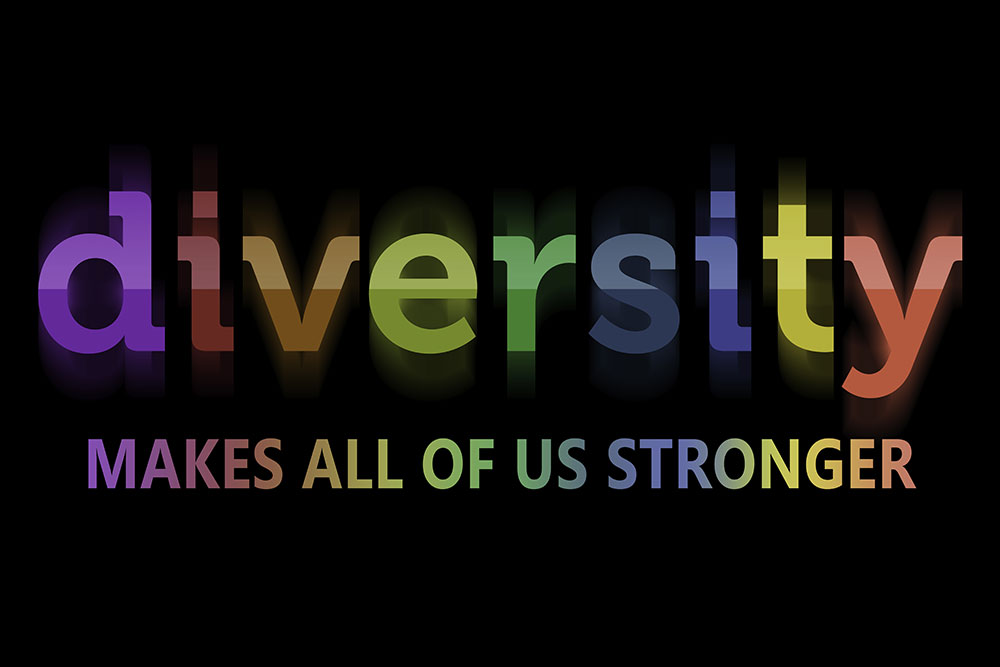
It’s not unusual to hear about equality and diversity in your workplace now. And most people would agree this is a good thing.
Promoting workplace equality and diversity helps businesses advance and make a fairer society.
But it’s not enough to say the words. Employers need to understand and commit to their ideals to see any benefits.
So, what is equality and diversity?
Read our guide to learn about workplace equality and diversity, how you can encourage them and the benefits they can bring.
Equality
Equality is the idea that everyone deserves equal opportunities regardless of who they are.
But this does not mean you should strive to treat everyone the same way. Equality is about outcomes. You need to acknowledge that some people, for whatever reason, will require additional support to achieve the same success as others.
To use an extreme example, you can’t expect an employee who uses a wheelchair to take the stairs like everyone else. You want everyone to have an equal opportunity to get where they want to be, although not necessarily taking the same route.
Diversity
Diversity is about acknowledging and respecting that everyone’s different.
The concept of diversity is closely linked to equality. To give everyone the same opportunity to succeed, you need to acknowledge their differences and potentially make adjustments for them.
Diversity is also something to celebrate. We’re all unique, even if our differences are minor or invisible. It’s these differences that make us who we are.
Inclusivity
Inclusivity goes hand in hand with diversity. It refers to the actual practice of making adjustments for people who might otherwise be marginalised or excluded. These adjustments can be big or small. But everyone in an inclusive workplace should feel valued and able to succeed.
Together, equality, diversity and inclusivity can be referred to as EDI. Any effort to make a fairer workplace requires dedication to all three concepts.
Equality and Diversity Training
Our Equality and Diversity Training provides employers and their employees with an understanding of treating everyone equally within the work environment and how effective communication can help eliminate discrimination.
Is Equality, Diversity and Inclusivity a Legal Requirement?
As an employer, there’s a minimum you must do to promote equality, diversity and inclusivity in the workplace. Most of these requirements are outlined in the Equality Act 2010, written to protect individuals from discrimination in work, education and other settings. The Equality Act outlined nine protected characteristics, which are:
- Age
- Disability
- Gender reassignment (either completed or ongoing)
- Marriage or civil partnership
- Pregnancy and maternity
- Race
- Religion or beliefs
- Sex
- Sexual orientation
As an employer, you cannot discriminate directly or indirectly because of any protected characteristic. You must also make reasonable adjustments for employees with disabilities.
Failing to do so will leave you liable for legal action.
The Benefits of Promoting Equality and Diversity at Work
There are obvious moral benefits to making fairer workplaces. But luckily, promoting equality and diversity at work can do more than make you feel good about yourself.

Research has shown that investing in equality, diversity and inclusion offers a range of benefits for employers.
Reputation
Consumers are growing more cautious of businesses that behave unethically. And even during relative economic difficulty, studies have shown that most consumers would pay more for products or services from a company whose values align with theirs.
Actively promoting equality, diversity and inclusivity in your workplace helps make your company look good and impress potential customers. And they’re not the only ones who might be affected.
Recruitment
The talent pool is pretty shallow if you’re only looking for one type of candidate. Anyone has the potential to add value to your business.
Jobseeker’s attitudes are also changing. A recent survey by a recruitment company found that 76% of candidates actively consider a company’s diversity before accepting a job offer. And a third of them wouldn’t even consider applying for a role if they felt the company wasn’t diverse or inclusive.
Performance
Studies have shown that diverse businesses perform better in several metrics, including higher revenues, better decision making and more significant innovation.
Bringing employees with different backgrounds, experiences and interests together avoids ‘groupthink’ and encourages new perspectives, ideas and smarter decision-making. Research has even found that organisations which embrace diversity enjoy higher average returns and growth.
It’s also been shown that inclusivity has strong links to employee satisfaction. Employee satisfaction promotes creativity and productivity and drives down absenteeism.
How to Promote Equality and Diversity in Your Workplace
Several different strategies encourage equality and diversity in the workplace. But they all need lasting commitment from employers and senior management to succeed.
Establish Policies
It’s essential to back any efforts to promote equality and diversity with actual policies. You must ensure you and your management team work actively to make a fairer workplace.
And employees need to see that EDI is an actual priority. Staff will also feel more confident offering their opinions or pursuing opportunities when they know policies are in place to promote inclusivity and protect against discrimination.
Ask for Feedback
Ask your employees how they feel about equality and diversity in your workplace. Do they feel valued? Is there anything they’d do differently? Getting their opinions will give you a good idea of where change must happen.
Collecting feedback allows you to demonstrate your commitment to inclusivity. Acting on your employees’ suggestions also makes them feel listened to and will encourage them to speak up.
Change Your Language
Having a diverse workforce means recruiting diverse candidates. Only use gender-neutral terms in any job adverts or descriptions. And be mindful of words associated with a specific gender or stereotype.
Decreasing the expected level of qualifications or experience in job posts is also worthwhile. This might seem counterintuitive, but many quality candidates, particularly women, are put off from applying when the minimum requirements seem daunting.
You should continue this practice for all forms of internal communication too. Eliminate all discriminatory or sexist language from your vocabulary and set an example for your employees.
Encourage Teamwork
You should try and create diverse teams whenever possible. The more backgrounds, experiences and values on a team, the better.
This can be difficult for smaller organisations, but diversity doesn’t need to be extreme. It can be as simple as pairing up two employees who don’t typically work together.
Equality and Diversity Training
Investing in equality and diversity training is one of the most effective ways to promote EDI in your workplace.
Our Equality and Diversity training helps you recognise discrimination in your workplace and supports a fairer, more inclusive way of working. You’ll learn the difference between equality and diversity, how to communicate without bias and strategies that make any workplace more inclusive. The course is suitable for all employees. You’ll be able to boost morale, make your teams feel valued and realise diversity’s benefits to business.





















